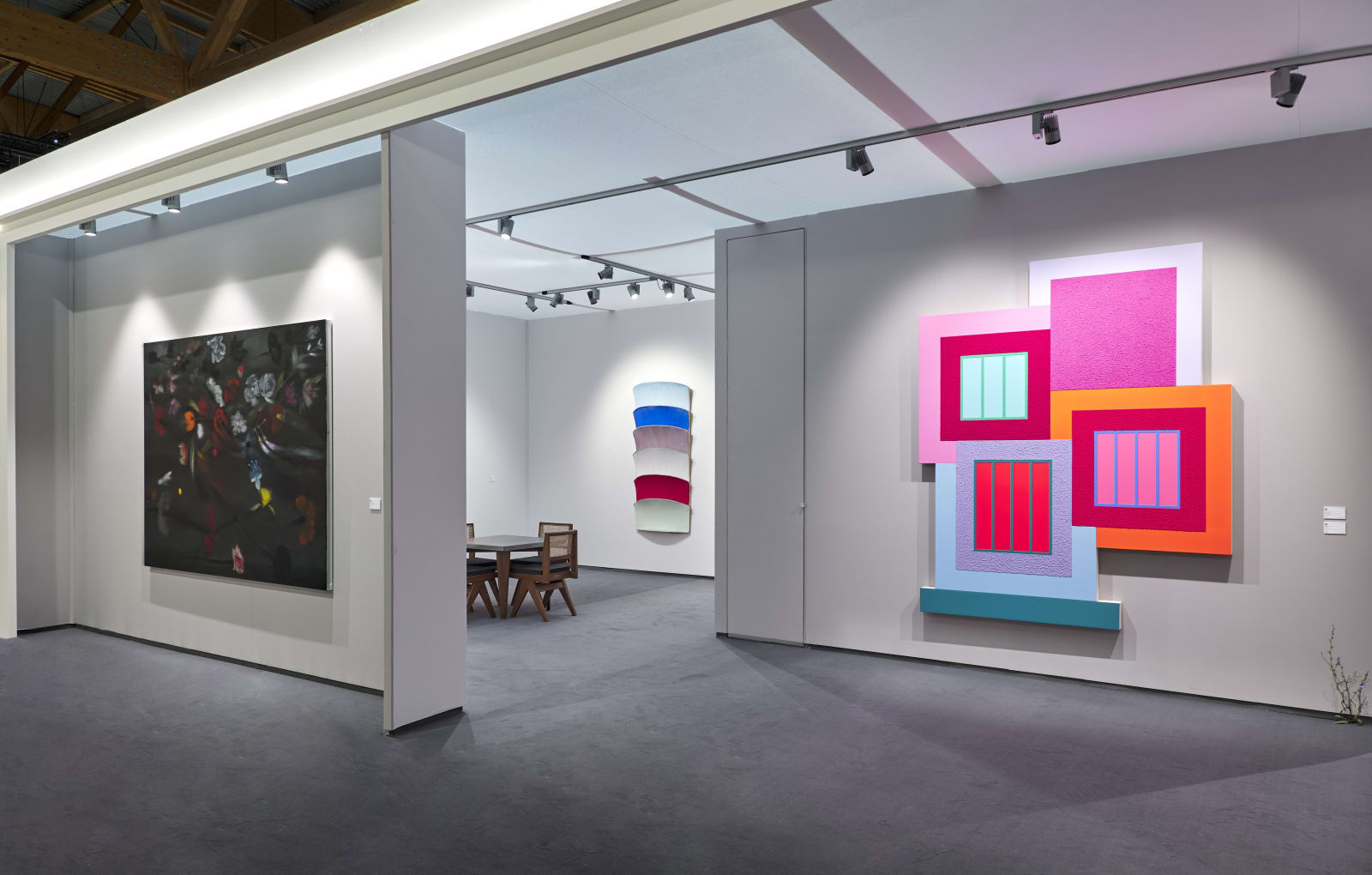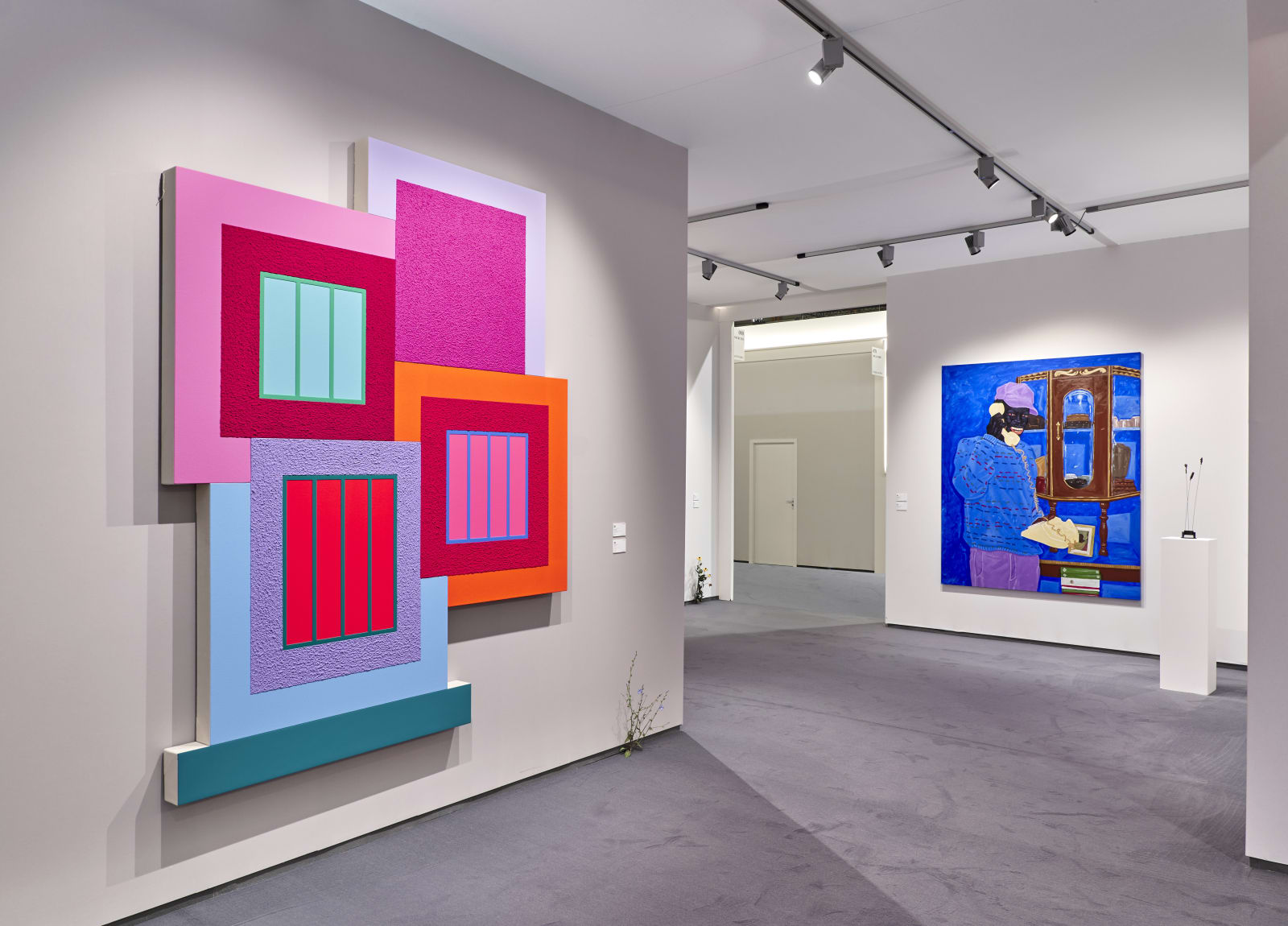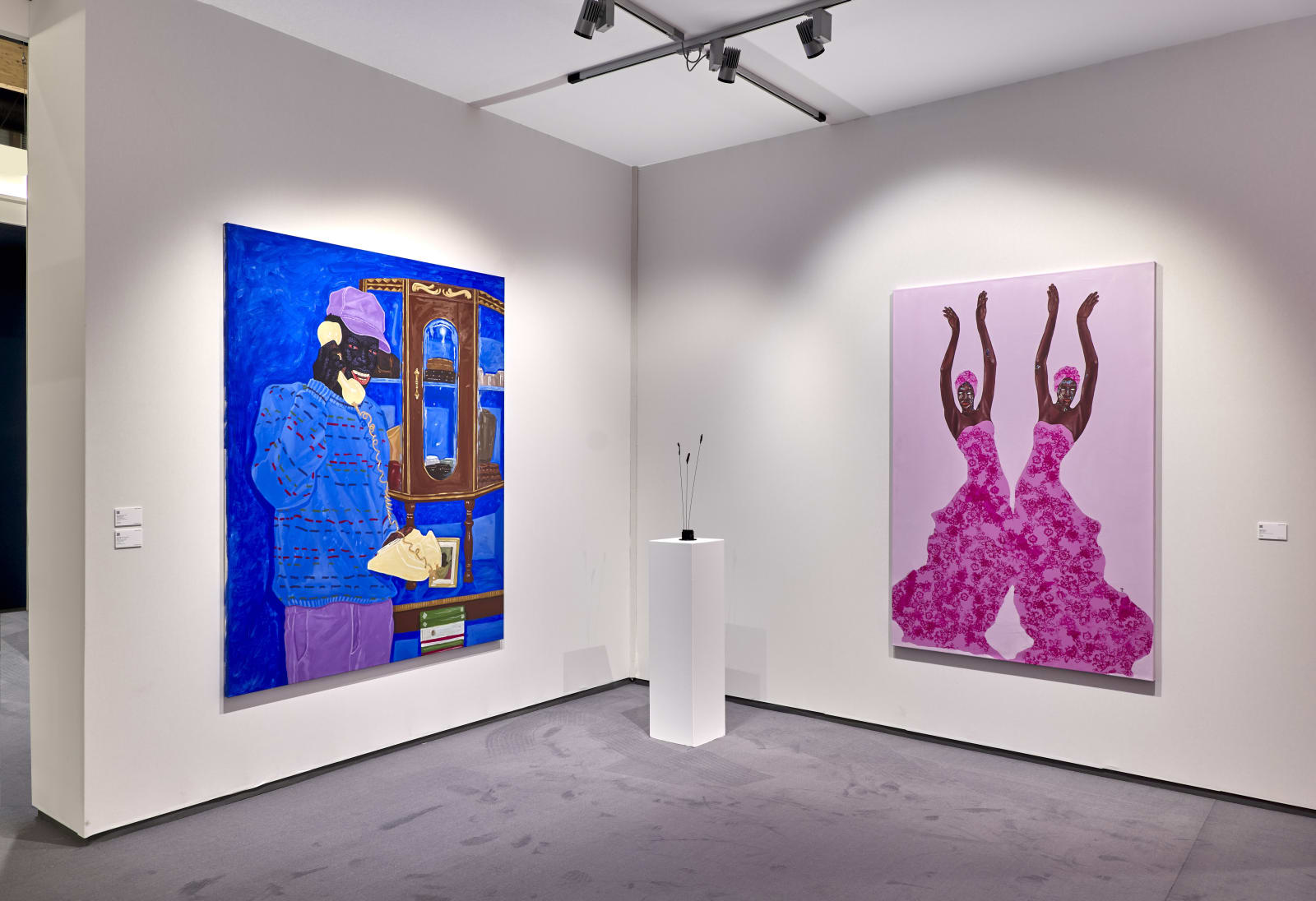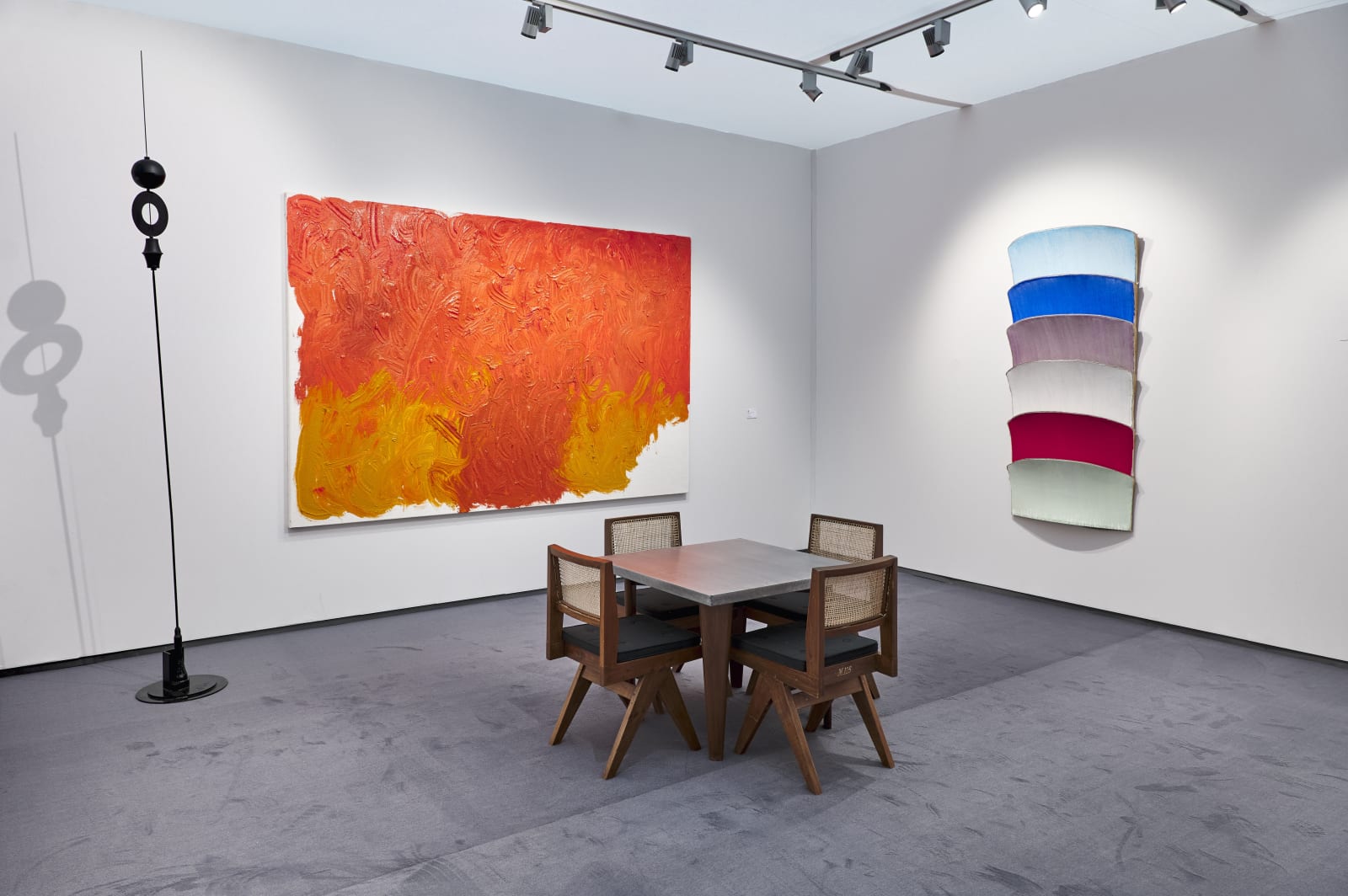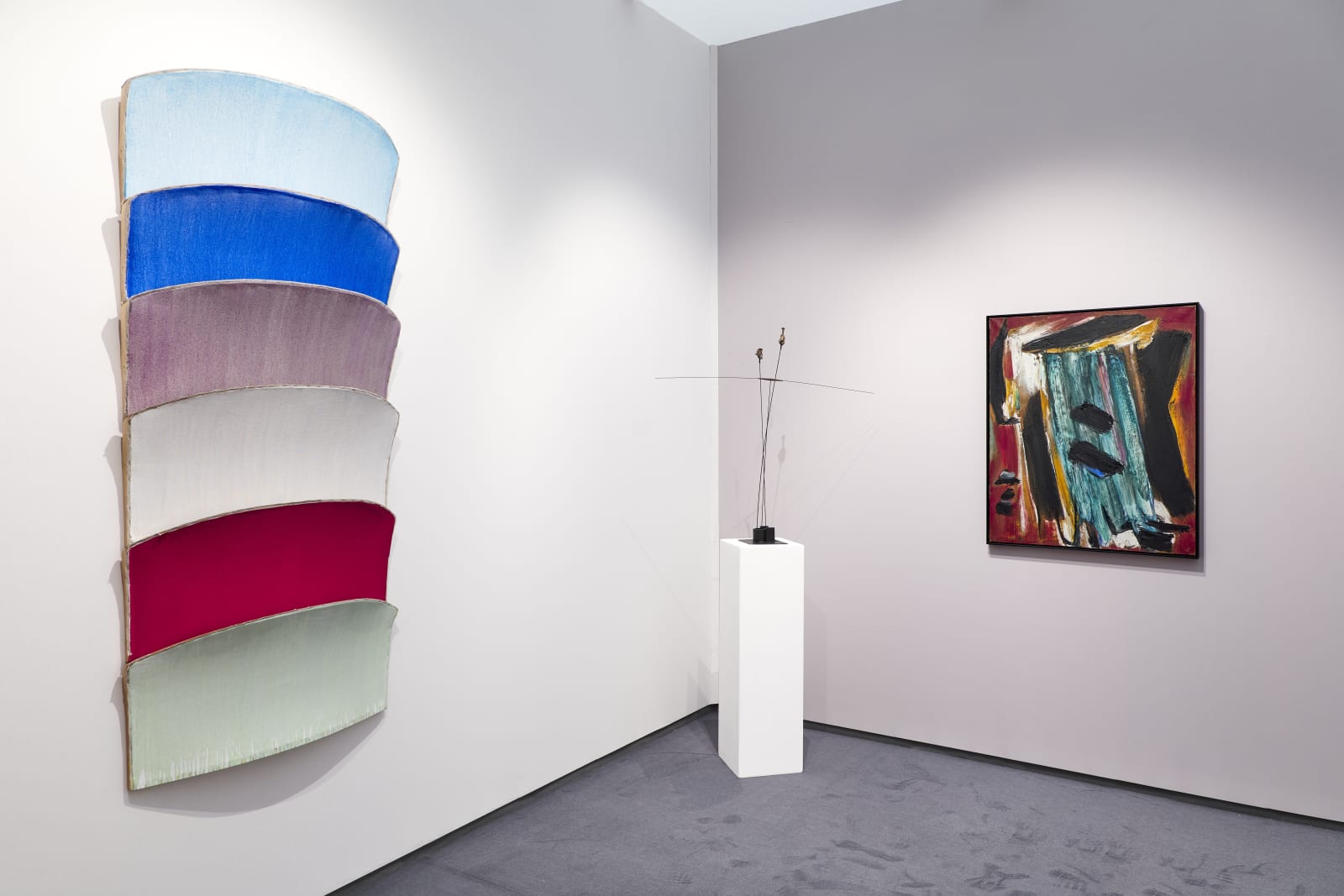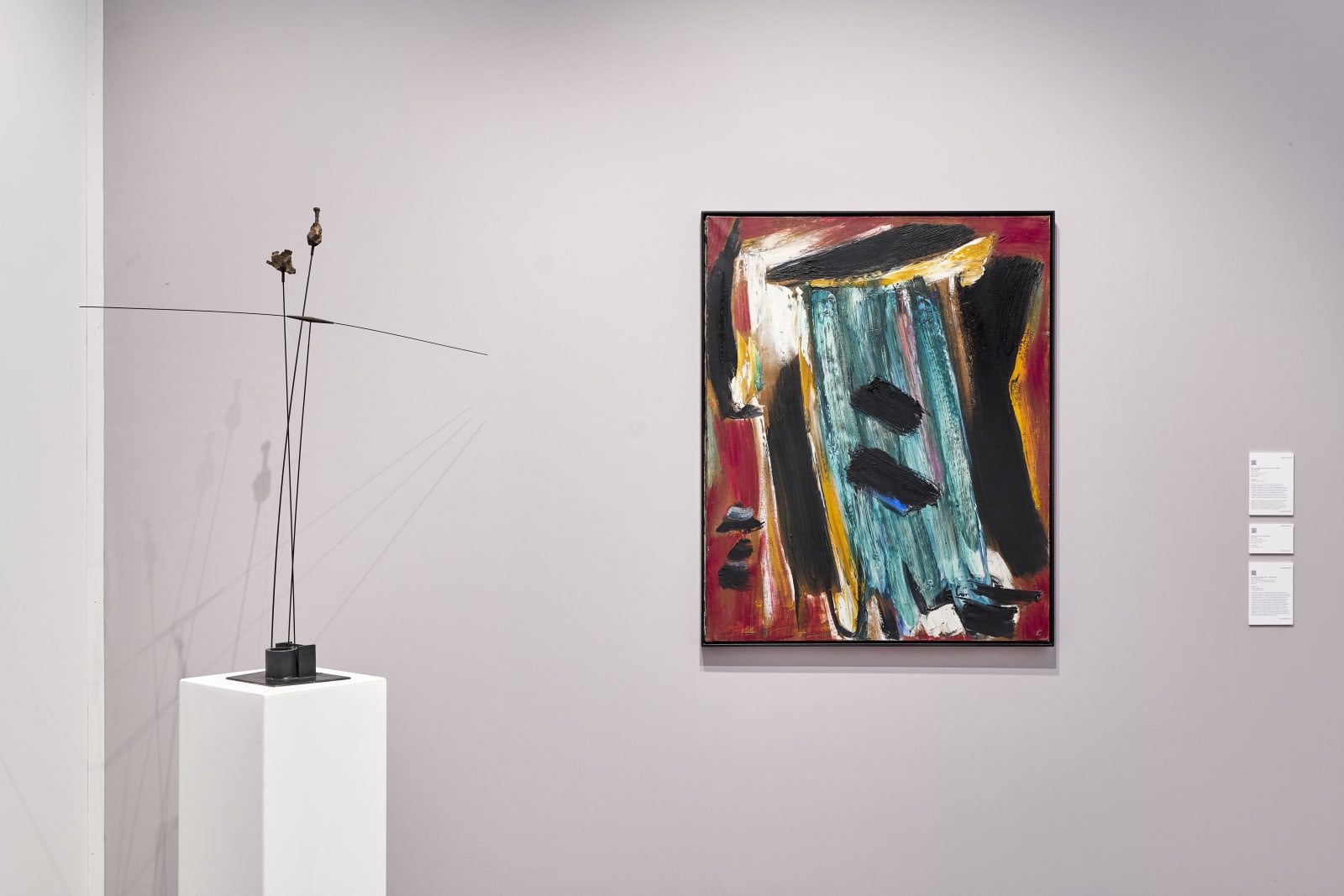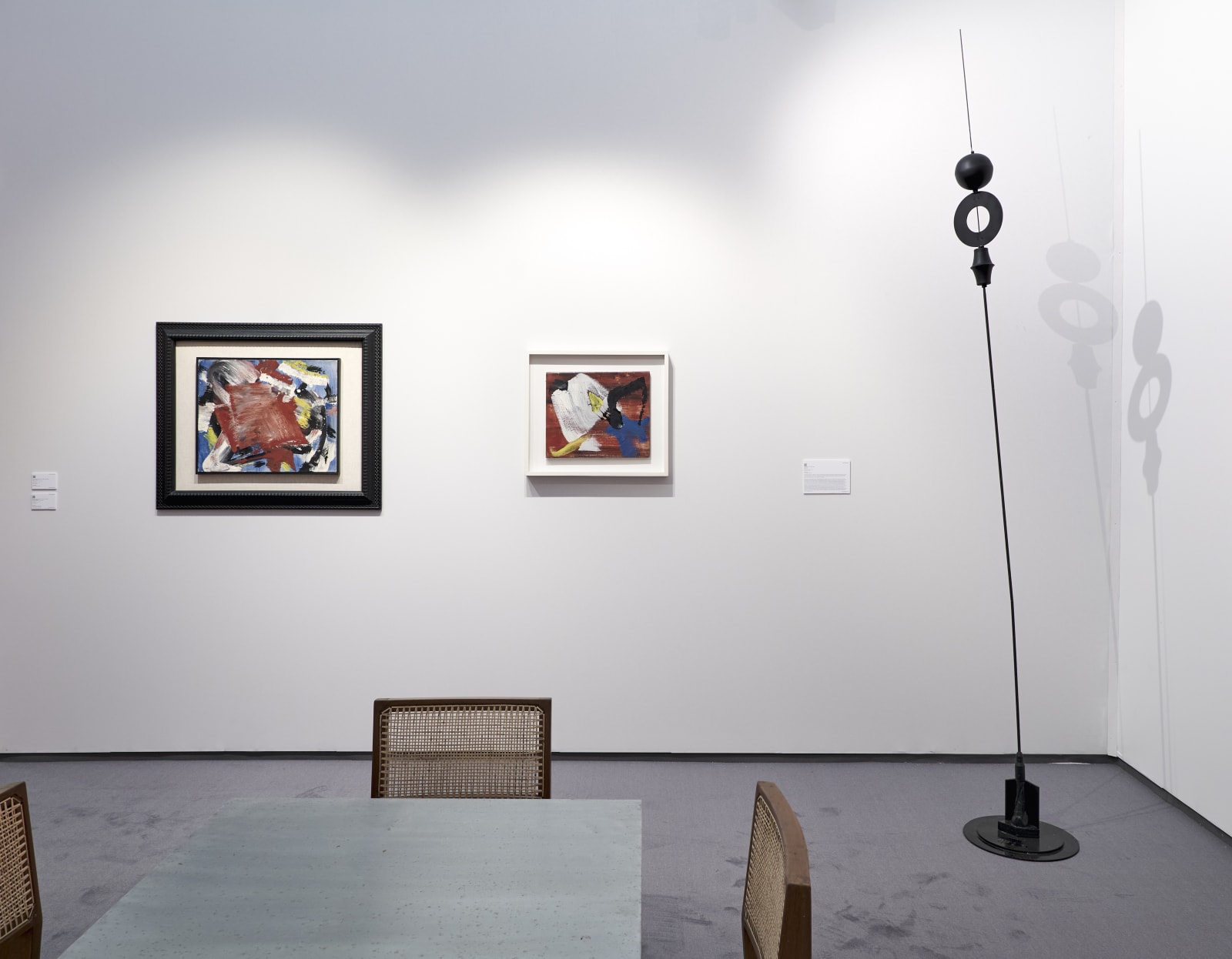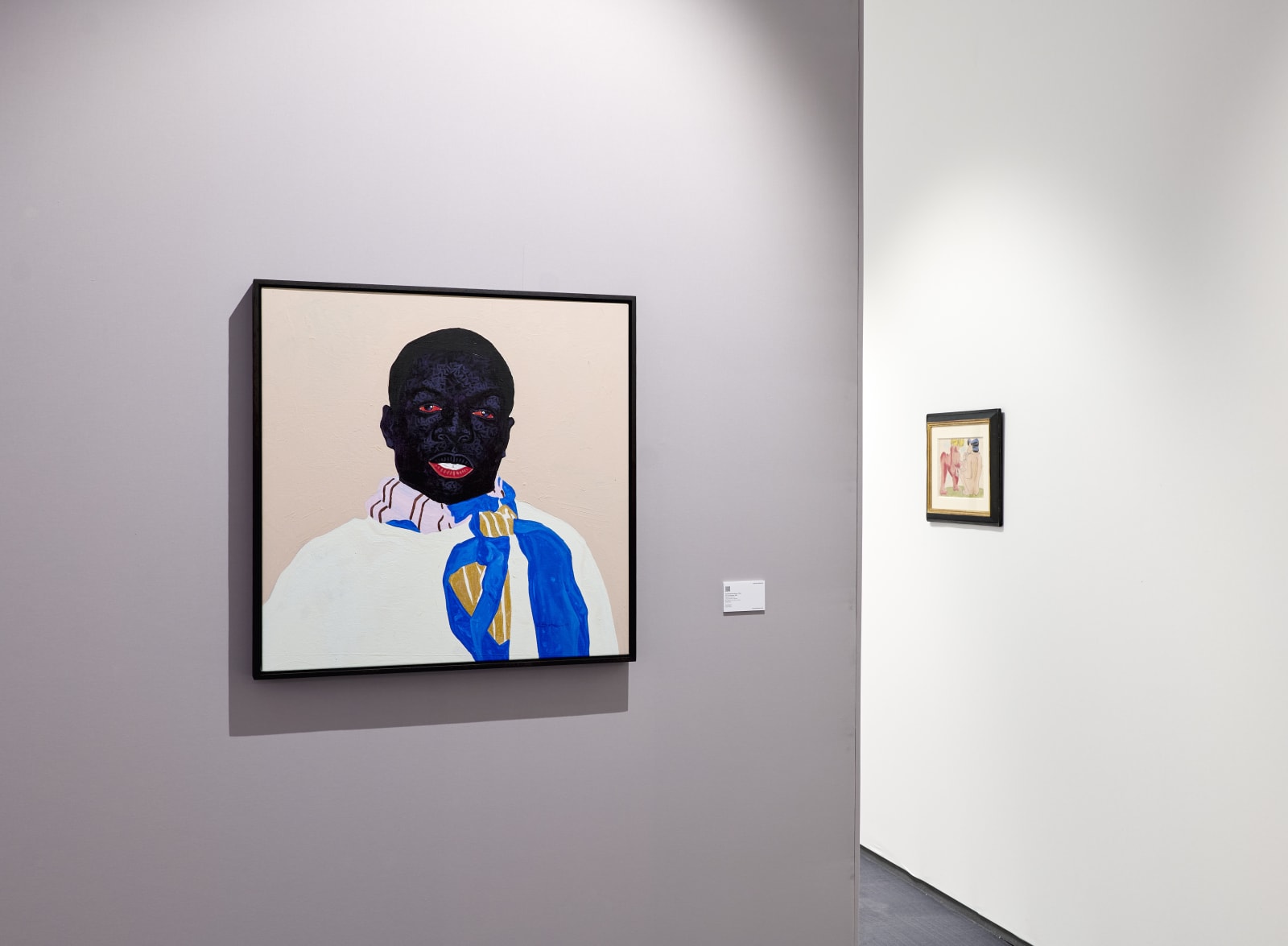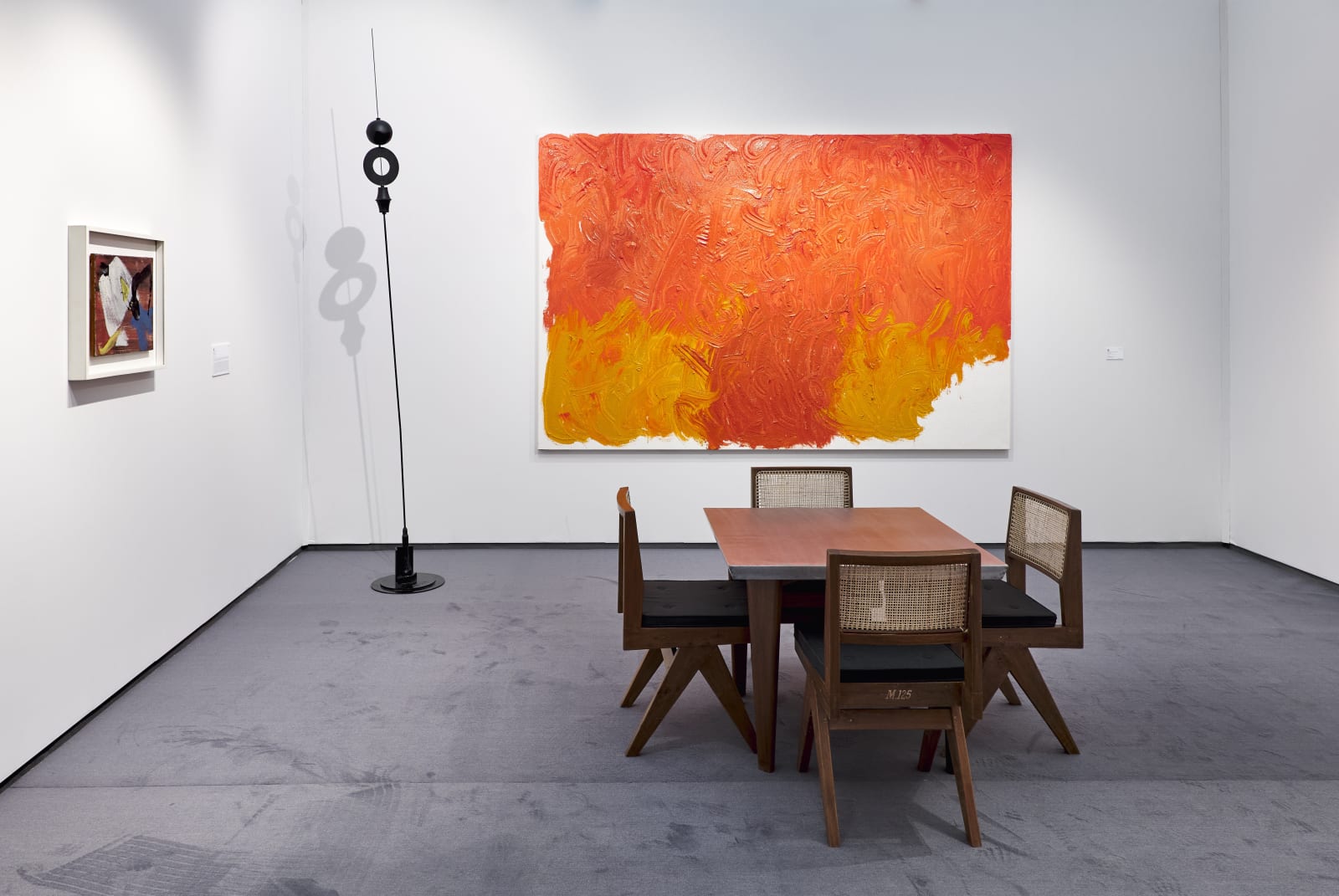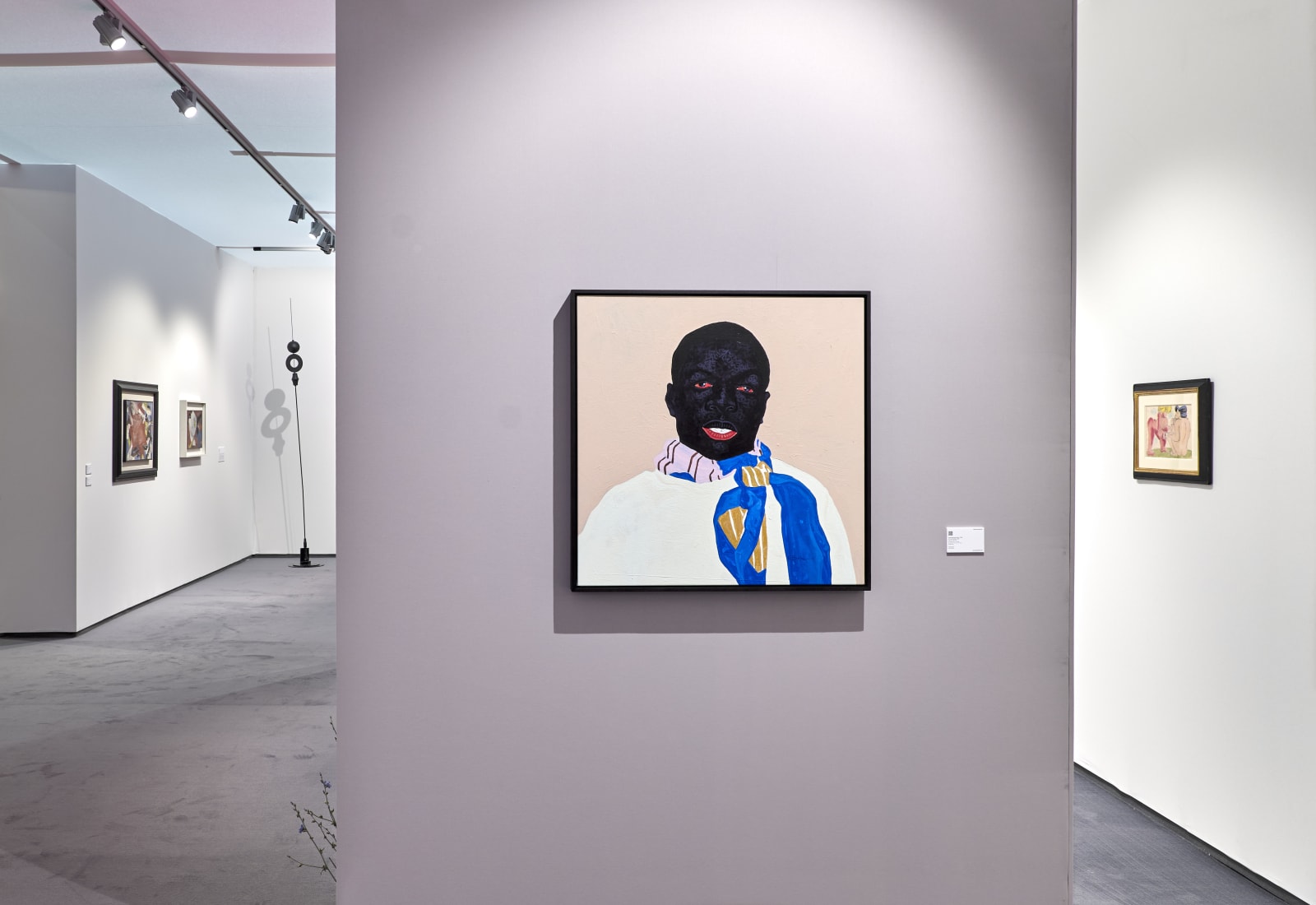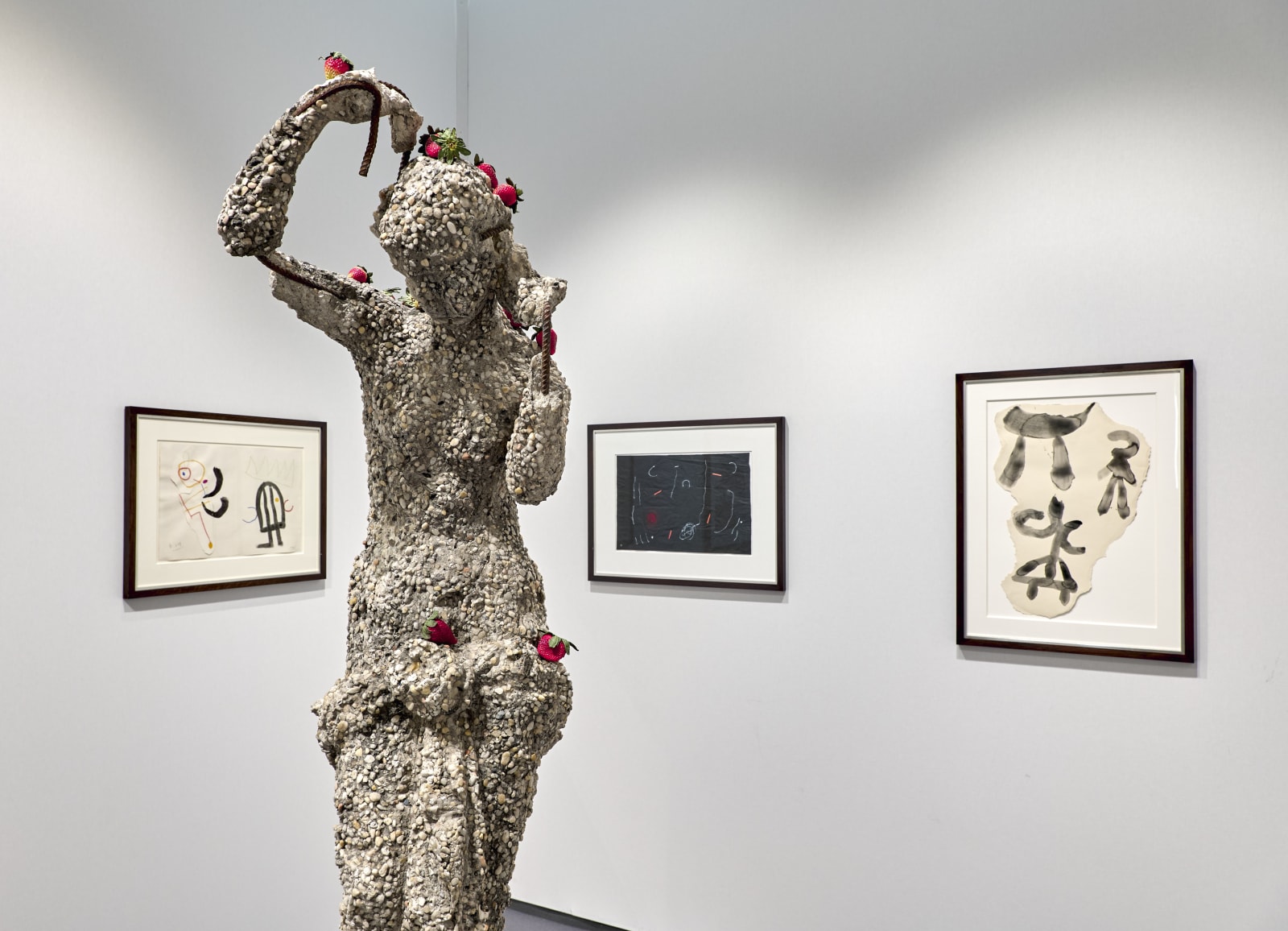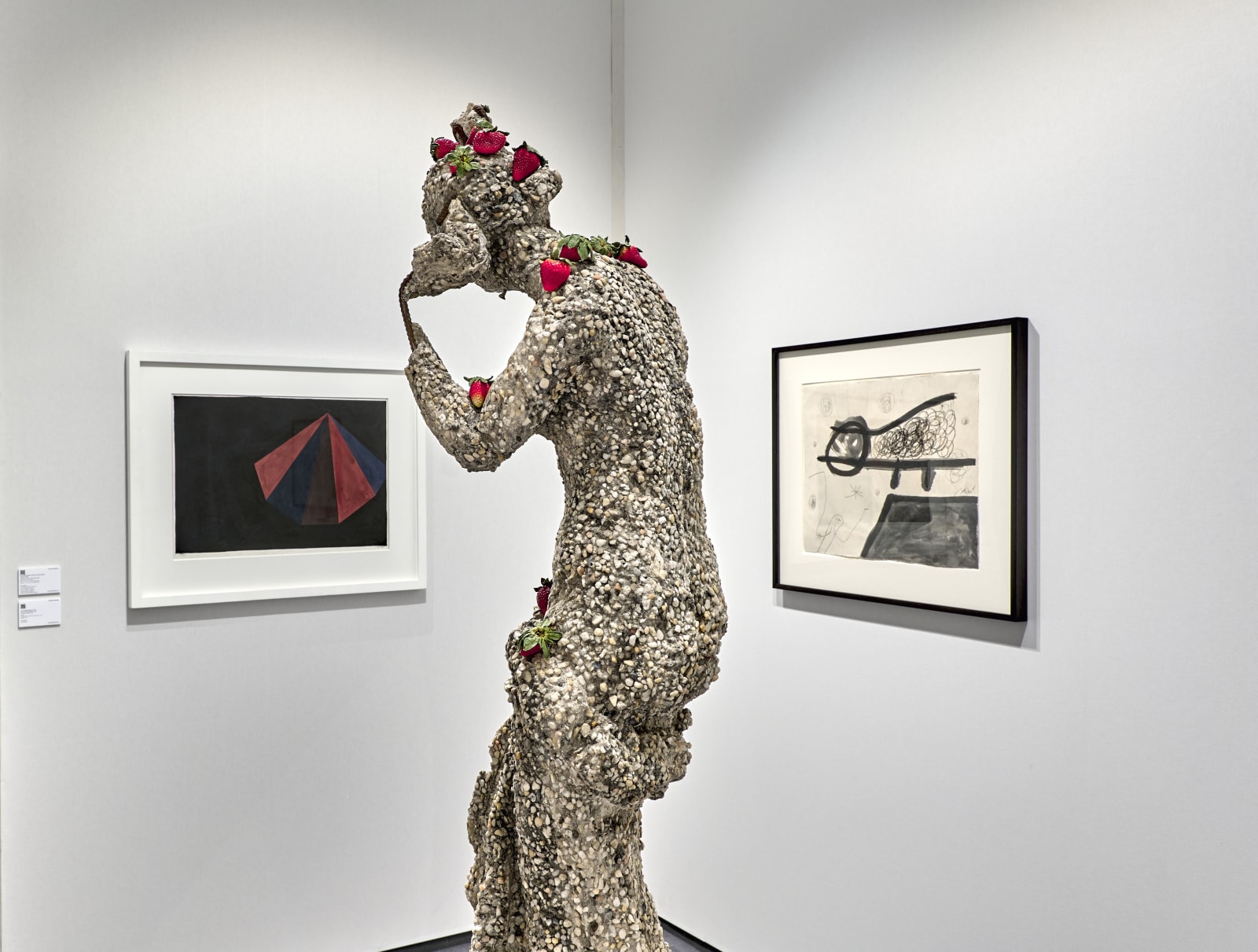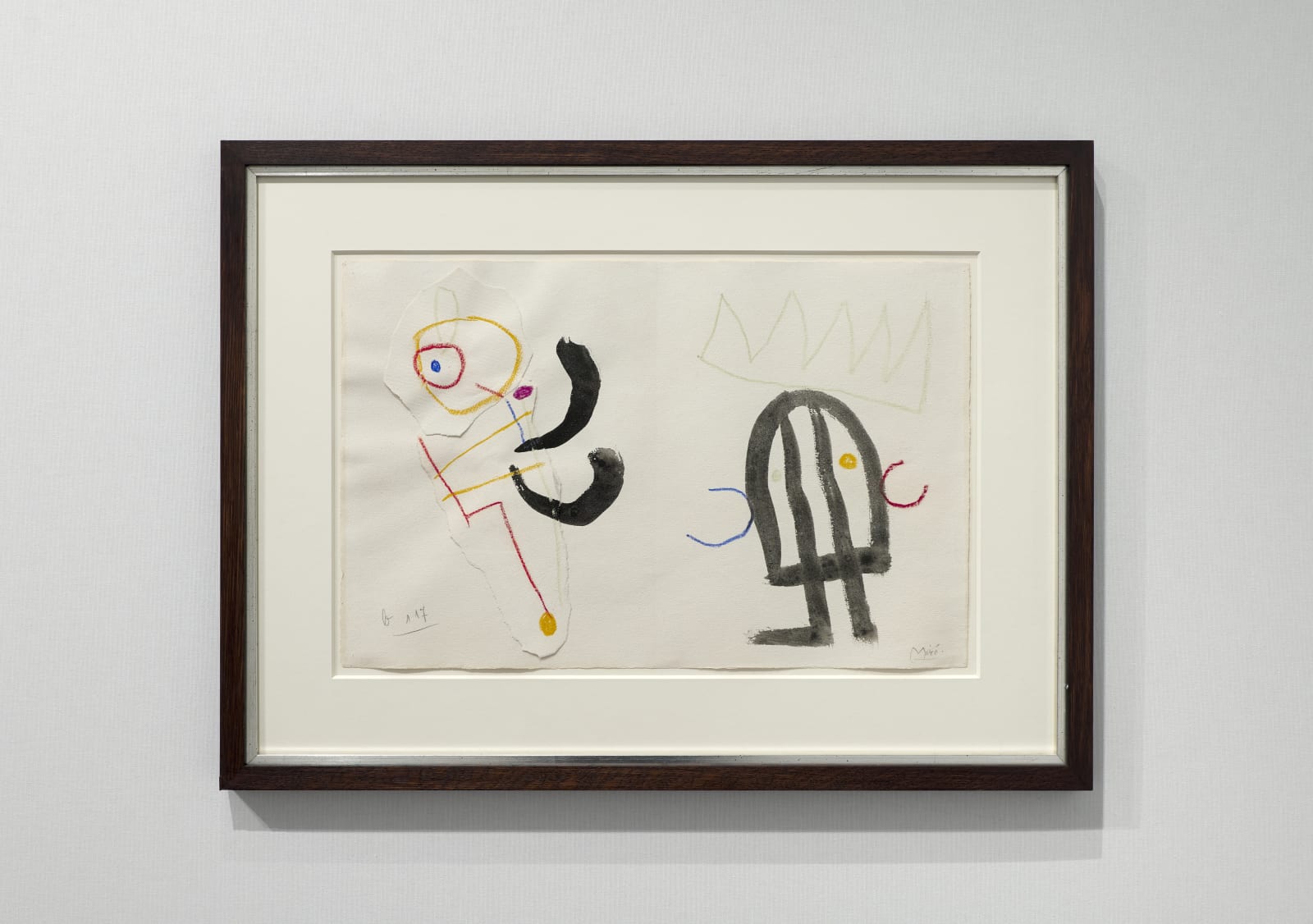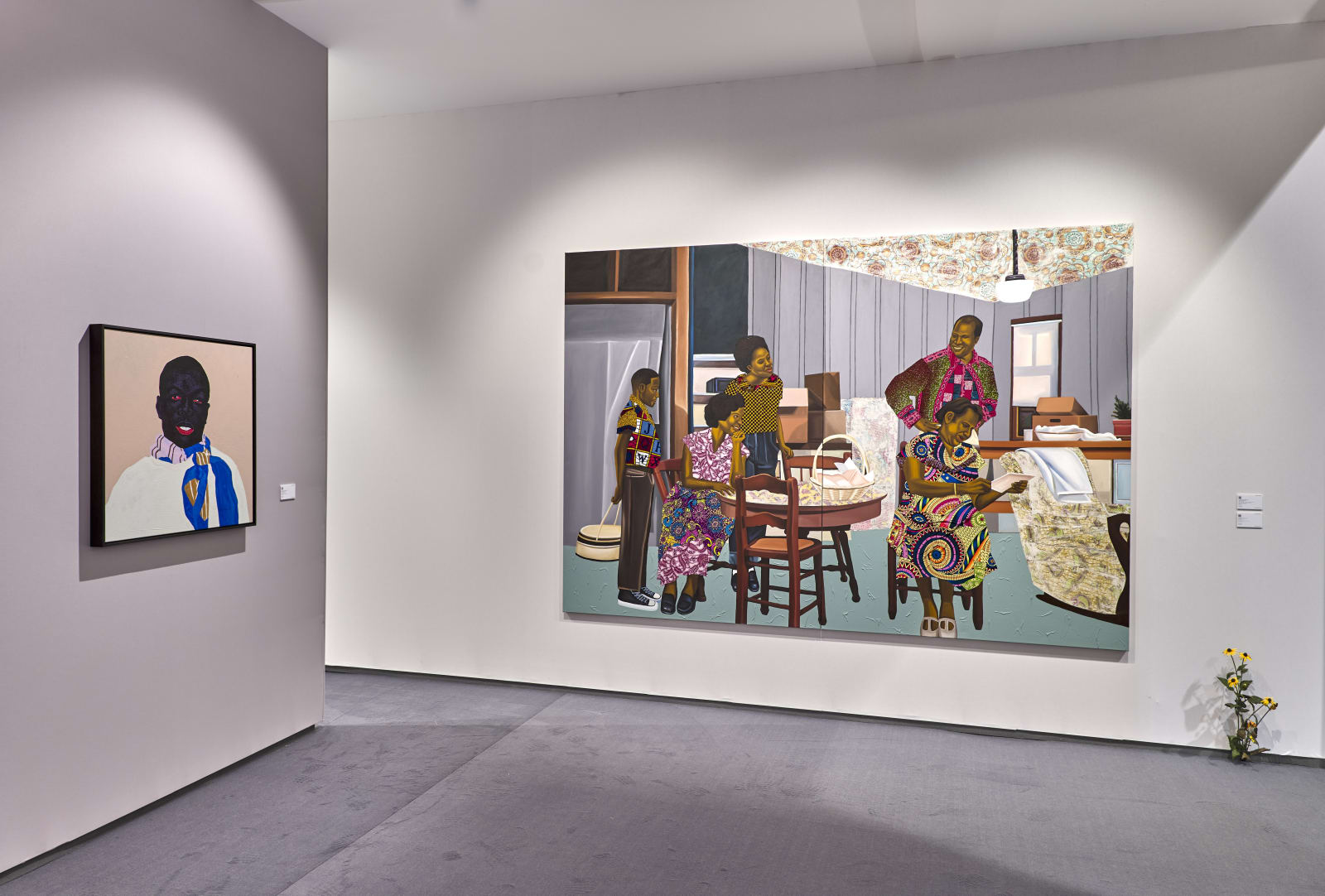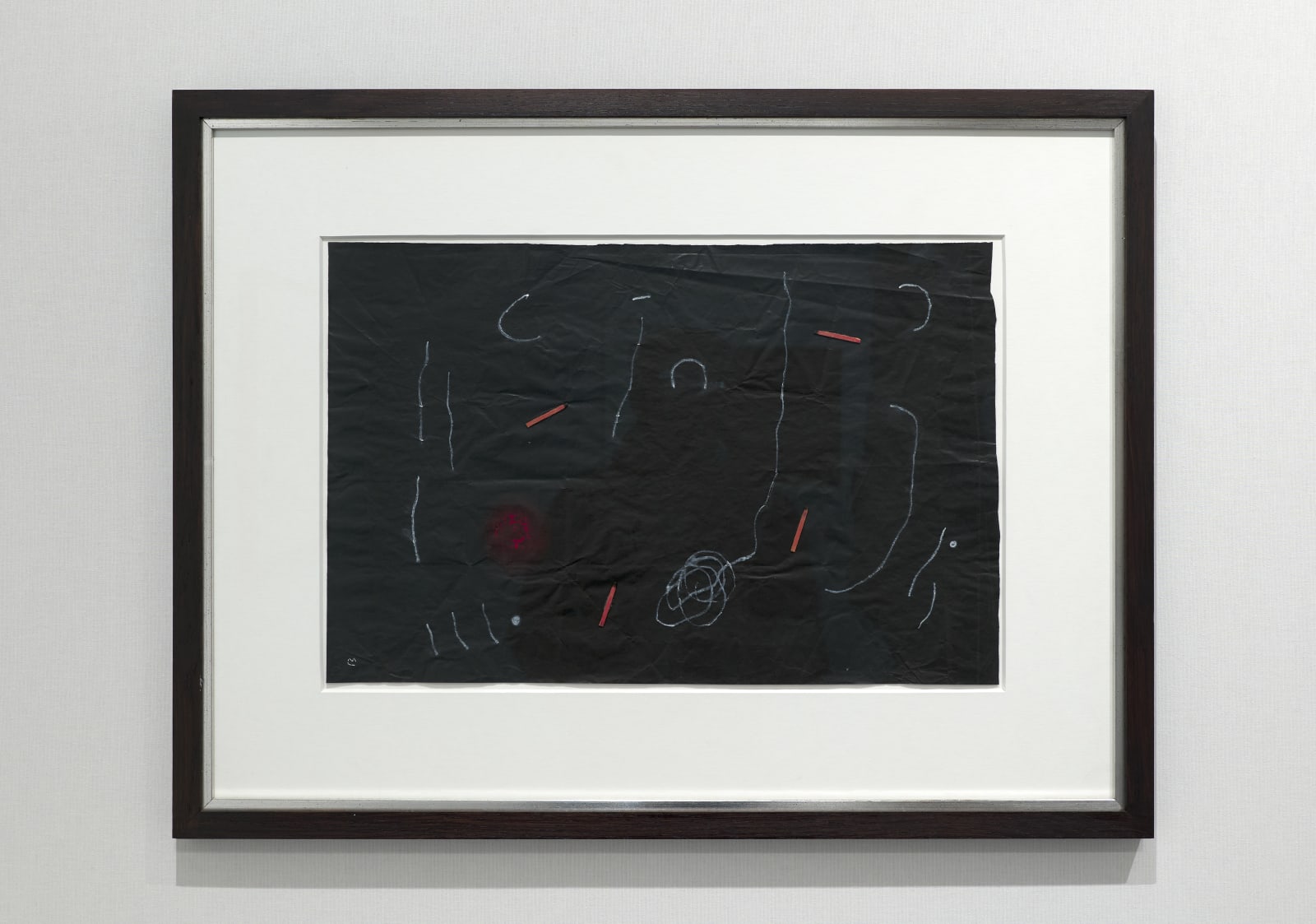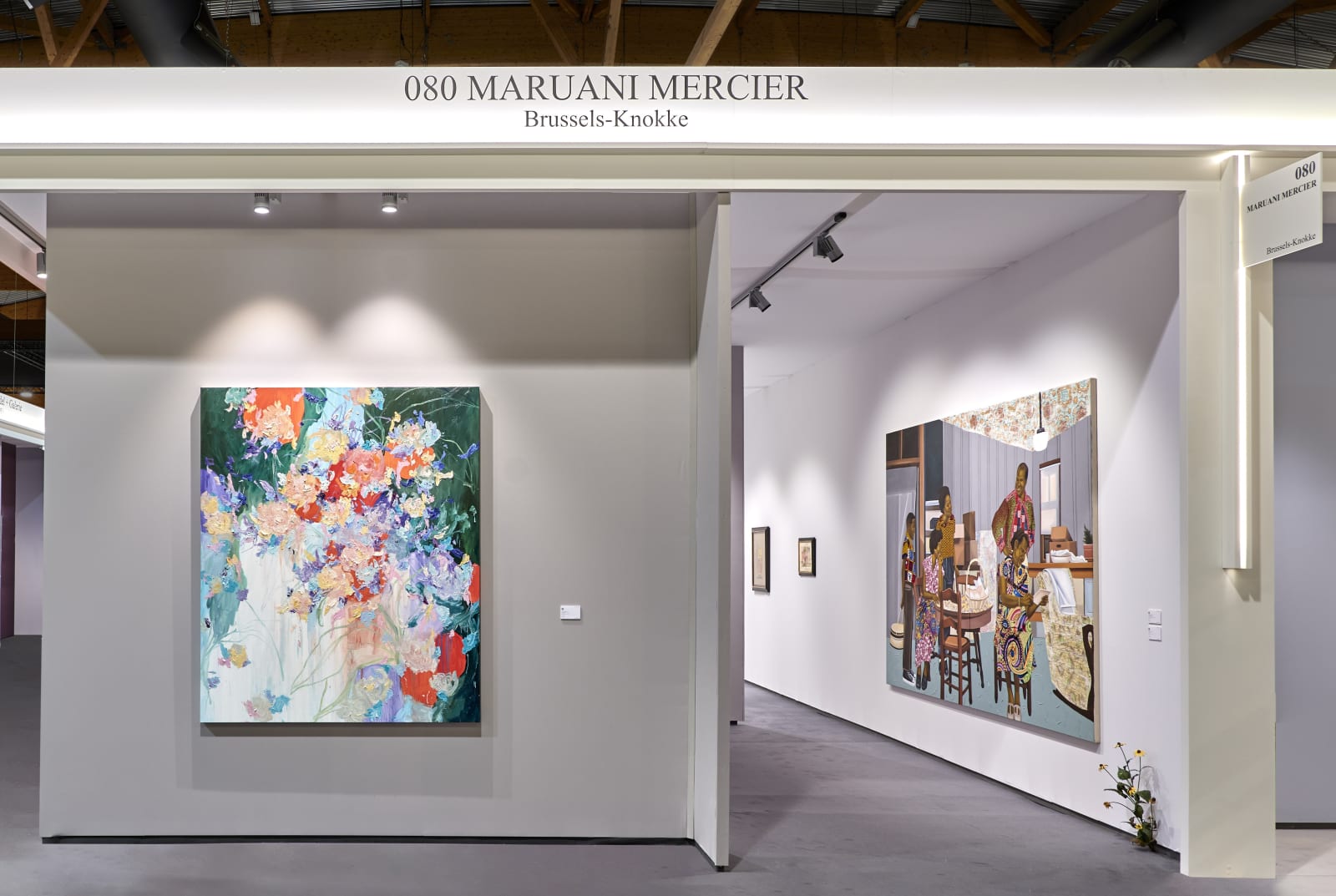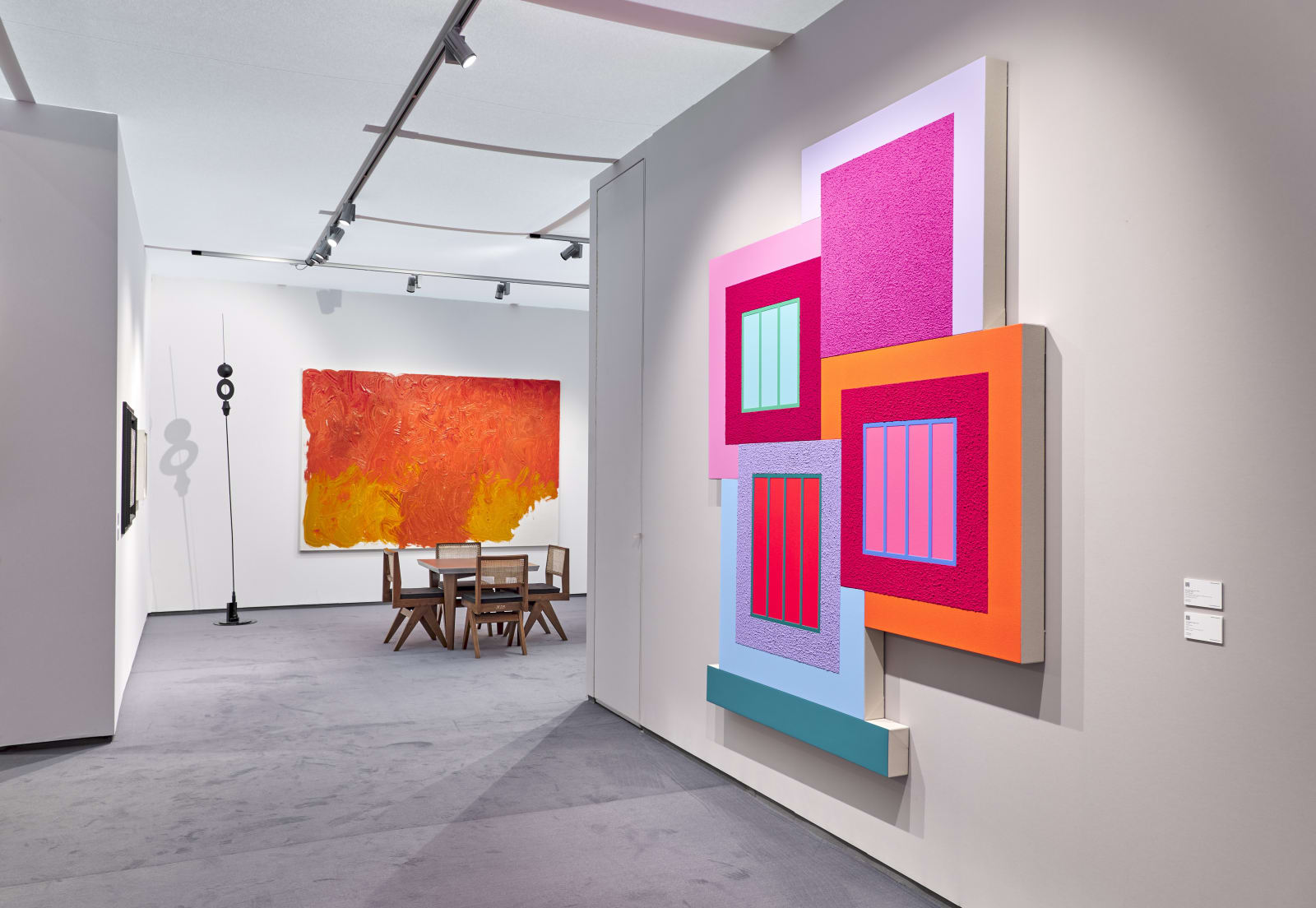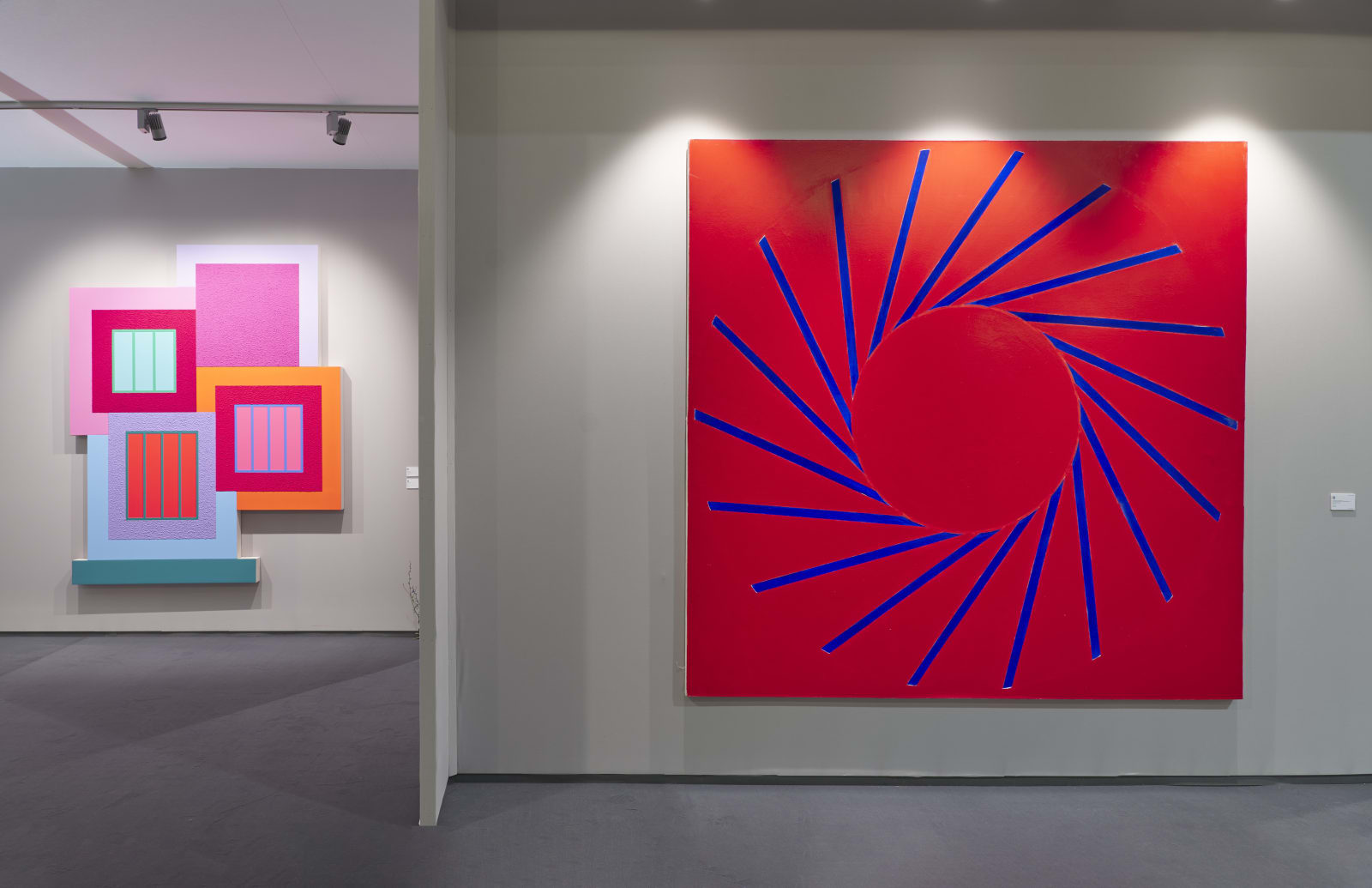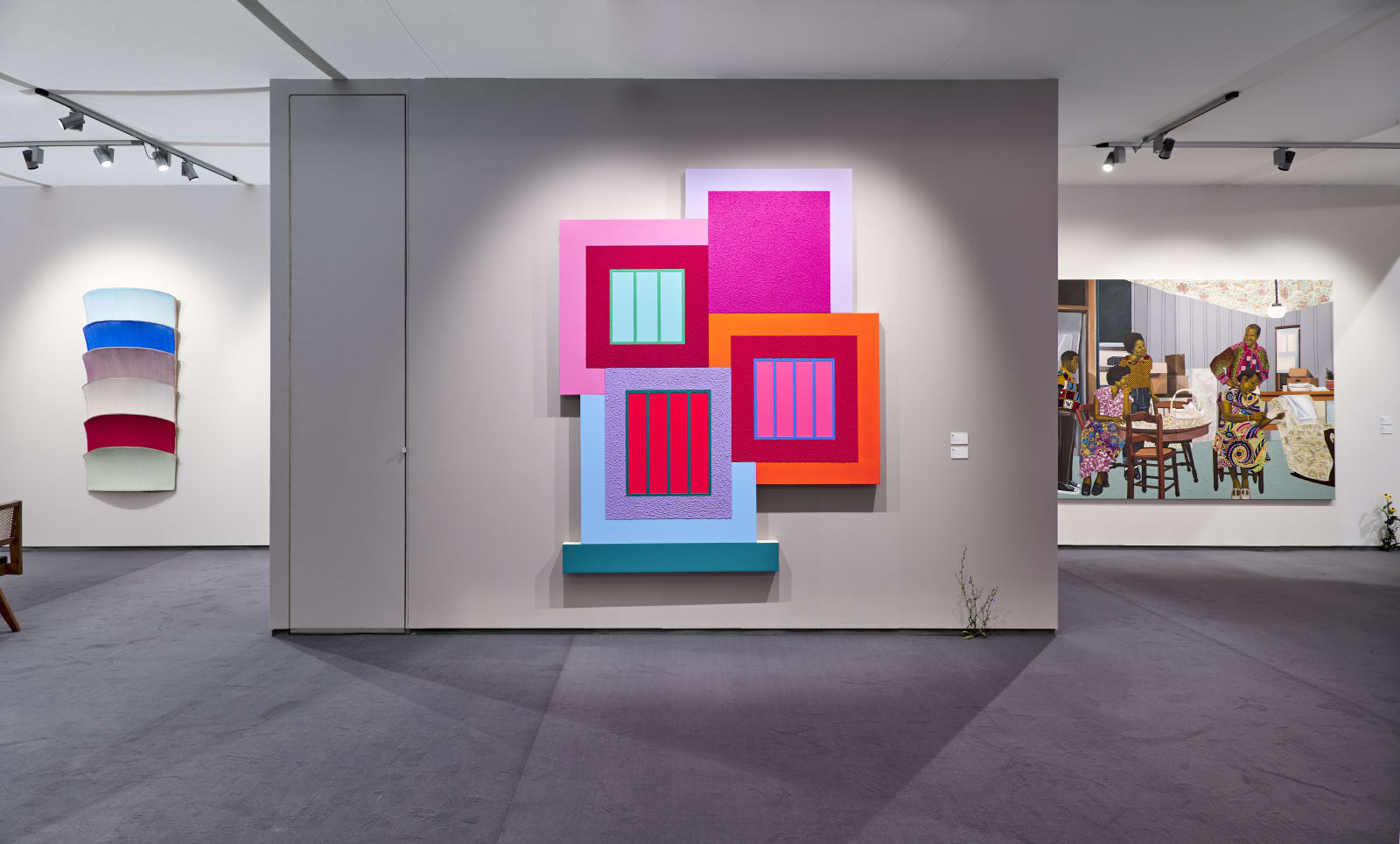MARUANI MERCIER Gallery is pleased to return to this year's edition of BRAFA with a selection of artists reflecting their dynamic modern and contemporary program. Works by household names including Ross Bleckner, Ron Gorchov, Peter Halley, Le Corbusier, Sol Lewitt, Tony Matelli, Paul Mogensen, Hermann Nitsch, Arne Quinze, Takis, and Gérard Schneider, are shown in tandem with rising talents including Cornelius Annor and Kwesi Botchway.
A highlight includes early works by kinetic art pioneer Takis. These works, from his Signals series, are largely inspired by the movement of radar antennas. The clashing of objects in these sculptures, as in his other works like Musicales, create sounds that produce irregular melodies and harmonies. For Takis, art and science were not dissimilar as both artists and scientists sought answers to universal questions. Takis’ work has been extensively exhibited in prestigious venues around the world, most recently at the Tate Modern in 2019. In the last decade, his work was exhibited at MACBA Museu d'Art Contemporani de Barcelona, the Tate Modern, London, Palais de Tokyo, Paris, and the Menil Collection, Houston. His work is collected by Centre Pompidou, Paris, the MoMA, New York, the Guggenheim Museum, New York, and the Tate, London, among many others.
Two very early drawings by Le Corbusier also stand out, showcasing the artist’s visible stylistic evolution, from still life to figurative. Born Charles-Édouard Jeanneret-Gris, Le Corbusier began to paint shortly after moving to Paris in 1917 where he met contemporaries Amédée Ozenfant, Pablo Picasso, and Fernand Léger. Together, Le Corbusier and Ozenfant developed a movement called ‘Purism’ which was promoted in their self-published magazine L’Esprit Nouveau. Departing from Cubism, the movement was largely based on still-lifes and investigated color and construction.
The Lyrical Abstractionist Gérard Schneider’s canvases capture a mood in permanence. In the footsteps of Kandinsky, his works are inherently musical. A synthesis of sound and vision, Schneider’s expressive paintings were executed with impulsive bodily movements, creating lines that take unexpected twists and turns. Works following his post-war period as seen here opened a path toward a more liberated style with a calligraphic quality: brushstrokes became less predicated much like his abstract expressionist contemporaries. He titled many of his works ‘Opus’, a nod to the ongoing titling system of musical compositions. Today Schneider’s work can be found in the world’s most prestigious collections, including the Musée d’Art Moderne, Brussels, the MoMA, New York, Galleria d’Arte Moderna, Rome, the Centre Pompidou, Paris, Museu de Arte Moderna do Rio de Janeiro, Rio de Janeiro and the Montréal Museum of Fine Arts, Québec, among many others; and has been featured at Documenta twice.
Finally, Tony Matelli presents painstaking details in his resemblant sculptures. His works—characterized by hyperrealism and a twisted depiction of everyday objects often straddle the boundaries of absurdity and humor, raising broader existential questions. Concerned with how we define ourselves as human beings, and what constitutes meaningful relationships, Matelli chronicles these ideas through a playful lens whilst pushing the boundaries of his bronze and marble medium as seen in Figure with Strawberries (2019). The result is a subversive dialogue that deepens the conversation surrounding the possibilities of sculpture. The gallery is currently showing his debut solo exhibition entitled Timelines, featuring monumental sculptures and works from his earlier ‘Mirrors’ series. Taking place at their Brussels location, the exhibition can be visited during the duration of BRAFA and will close on February 11th, 2023.
